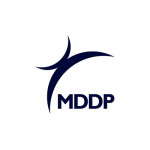An EU Council decision allowing Poland to introduce a mandatory e-invoicing system has been published in the Official Journal of the EU (L 168/81). The starting date of obligatory e-invoicing in Poland was originally planned for 2023, but has now been postponed to January 1st, 2024.
The derogation is granted for three years, until December 31 2026. It may be extended further, but Poland will still need to prove that this tool led to reducing VAT fraud and abus as well as simplifying VAT settlement for taxpayers.
Aside from Poland, a number of other member states plan to introduce obligatory e-invoicing in the coming years: Germany, France, Denmark, and Belgium. Real time e-invoicing is already operational in Italy, Spain, and Portugal.
It is worth mentioning that Poland is one of the countries that has already implemented a number of measures aimed at fighting VAT fraud, including:
SAF-T VAT monthly reporting;
A split payment mechanism;
A system for the electronic analysis of financial flows (STIR, which detects fraud based on bank transfers and blocks bank accounts when the risk indicator is high); and
An online fiscal cash register system for monitoring transactions in the retail sector.
Polish e-invoices will be issued and received in real time in a standardised XSD format through a governmental clearing system (the local abbreviation KSeF is often used, which comes from the Polish for ‘National System of e-Invoices’). All invoices will be accessible by tax authorities.
This will allow for the more effective prevention and identification of irregularities and errors, which in turn will help to combat VAT fraud and VAT evasion (especially VAT carousel fraud), and to reduce the VAT gap. Therefore, e-invoicing should reduce the number of tax audits and allow the tax authority to focus on real problem areas.
E-invoicing has already been introduced in Poland as of January 1 2022 under a voluntary model. The experience to date shows that not many taxpayers decided to switch to e-invoices, although there are incentives to do so. The main benefit is the shorter period of VAT refund (40 days instead of 60 days). In the current voluntary model, the supplier should receive the purchaser’s consent for receiving e-invoices via the KSeF central system.
Remaining questions about mandatory e-invoicing in Poland
According to the Council derogation decision, only entities established in Poland will be obliged to issue and receive standardised e-invoices. This means that foreign companies, even if registered for VAT purposes in Poland, will not fall under mandatory e-invoicing. They will still be allowed to issue and receive standard invoices – in electronic form or even on paper.
At this point, it is not certain whether the mandatory e-invoicing regulation will also cover foreign entities operating in Poland via a fixed establishment (such as a branch). The entities for which the system will be mandatory should be clearly specified in the regulations. No draft provisions have been issued so far in this matter.
In addition, it remains unknown whether invoices for private individuals will be issued in the central e-invoicing system or not. The Ministry of Finance’s plan is for the system to cover all invoices in B2B and B2C transactions.
Practicalities of e-invoicing
Businesses will be able to prepare e-invoices in their financial and accounting software and send them to the KSeF system via an application programming interface (API) – with relevant authorisation and authentication. Taxpayers can also use an online application prepared by the Ministry of Finance, which allows companies to issue and receive invoices one by one.
Each invoice will be validated by the government KSeF system from a technical perspective. In other words, the KSeF will check the invoice is compliant with the XSD schema and that the person or entity is authorised to issue an invoice. After verification, the invoice will be assigned a unique number. In cases where the invoice cannot be approved in the KSeF, the invoice will be rejected by the system.
There is a major issue for large companies issuing large numbers of invoices to be sent to the central system in batches. The verification may take a few days and, if one invoice fails verification, the whole batch of invoices will be rejected. Moreover, the system will not give any hint as to which invoice was incorrect.
Another practical issue is the lack of an option to add attachments to invoices issued in the KSeF system. The solution in this case may be to apply an external IT tool, a platform connecting the company’s system with the central KSeF system, where the attachments can be added to the e-invoices and transferred to the client.
The new e-invoicing system is a real revolution in invoicing in Poland. In the future, after the implementation process is successfully finalised, the taxpayers will benefit from the automation of accounting processes and the simplification of tax payments and tax reporting due to standardised invoices. However, the implementation process itself is very complex and time-consuming.
The main challenges of the implementation process are:
Switching to KSeF involves IT, financial, and organisational challenges. This is especially the case for businesses that use several different financial or invoicing systems, and that issue multiple invoices.
The new system requires developing or adapting multiple internal processes and procedures, including verifying invoices before sending them to the KSeF system, monitoring rejected invoices, changes in contracts, an invoices workflow, and methods of delivering invoices to customers who have no access to KSeF (such as foreign businesses or private individuals).
The implementation of structured e-invoices requires coordinating the work of teams involving IT specialists, finance experts, accountants, tax specialists, and invoice issuing and processing personnel.
Only comprehensive and early planning for the new e-invoicing implementation process will allow companies to properly prepare for upcoming changes. Taxpayers should start to plan now, to ensure they will be ready on time.












